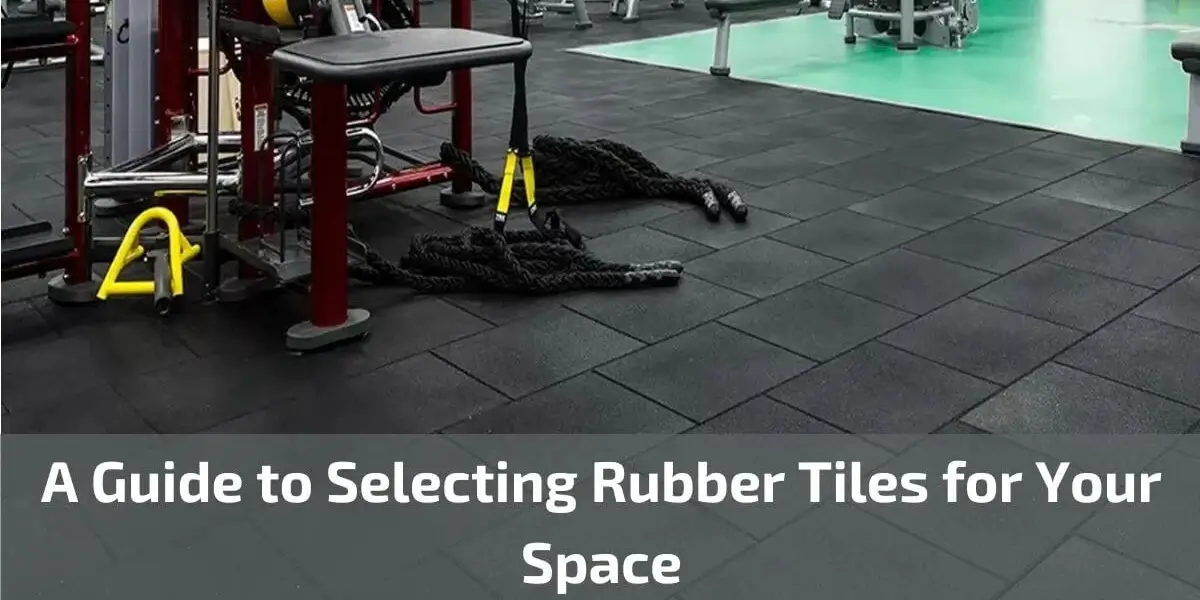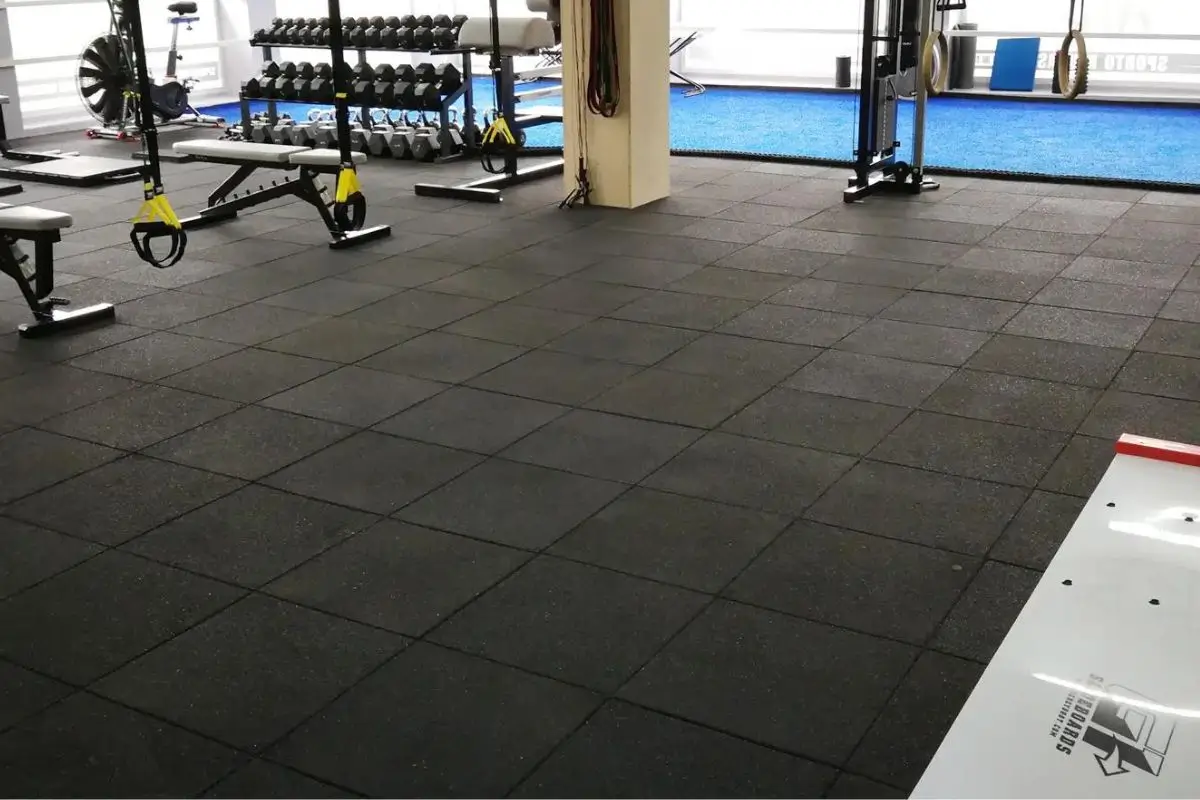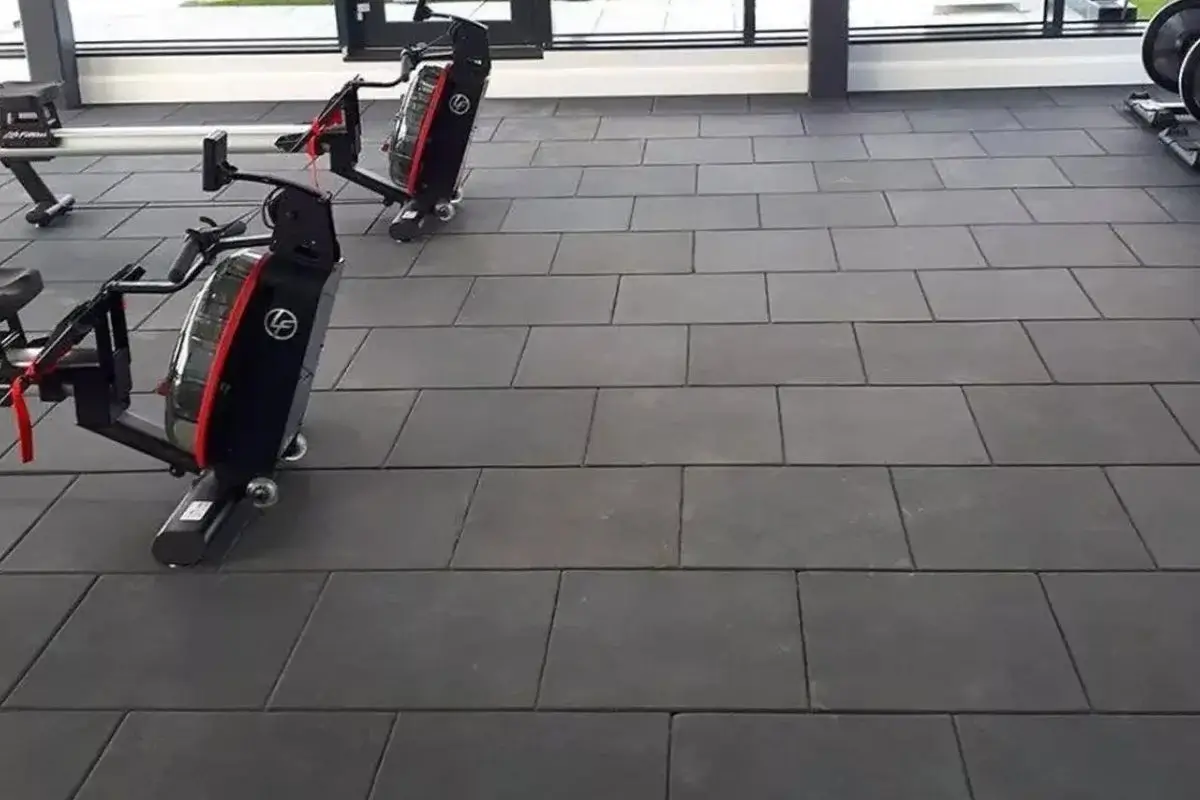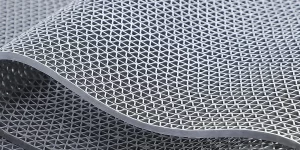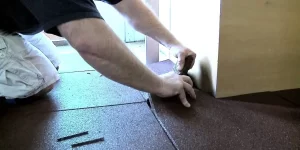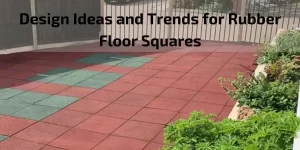Choosing the right flooring for your space is a critical decision that can significantly impact its functionality, aesthetics, and overall appeal. When it comes to versatile and durable flooring options, rubber tiles stand out as a popular choice for various environments, from commercial spaces to residential settings and beyond. Whether you’re renovating a gym, updating an office space, or revamping a home gym, selecting the right rubber tiles is essential to achieving the desired look, feel, and performance.
In this comprehensive guide, we will explore the factors to consider when selecting rubber tiles for your space. From understanding the benefits and applications of rubber tiles to navigating design options and installation considerations, this guide will equip you with the knowledge and insights needed to make informed decisions about your flooring investment.
Whether you prioritize durability, aesthetics, or sustainability, rubber tiles offer a versatile solution that meets the diverse needs of modern spaces. Join us as we embark on a journey to discover the endless possibilities and benefits of selecting rubber tiles for your next flooring project.
Overview of Rubber Tiles as a Versatile Flooring Option
Rubber tiles have emerged as a versatile and practical flooring solution for a wide range of environments, offering a host of benefits and applications. From commercial spaces to residential areas, rubber tiles have gained popularity due to their durability, safety features, and aesthetic appeal.
Rubber tiles are crafted from high-quality rubber materials, making them resilient and long-lasting. They are available in various thicknesses, textures, and colors, providing flexibility in design and functionality. This versatility allows rubber tiles to be used in diverse settings, including gyms, offices, schools, and outdoor spaces.
One of the key advantages of rubber tiles is their durability. They are resistant to wear and tear, making them suitable for high-traffic areas and heavy use. Rubber tiles also offer excellent shock absorption properties, minimizing the impact of heavy objects and reducing the risk of injury from slips and falls.
Furthermore, rubber tiles are slip-resistant, even when wet, making them ideal for areas prone to moisture or spills. This feature enhances safety and minimizes accidents, making rubber tiles a preferred choice for environments where safety is paramount.
Rubber tiles are also known for their noise-reducing properties, making them ideal for spaces where noise levels need to be controlled, such as gyms and office buildings. Additionally, rubber tiles are easy to maintain and clean, requiring minimal effort to keep them looking fresh and new.
In terms of aesthetics, rubber tiles offer a range of design options to suit various preferences and styles. Whether you prefer a sleek, modern look or a more traditional aesthetic, rubber tiles can be customized to complement any
Definition and Composition of Rubber Tiles
Rubber tiles are a type of flooring material crafted from rubber compounds, offering a resilient and durable surface suitable for a variety of applications. They are commonly manufactured using a blend of natural and synthetic rubber materials, which are combined with fillers, pigments, and other additives to enhance performance and durability.
The composition of rubber tiles typically includes the following components:
- Rubber Compounds: The primary ingredient in rubber tiles is rubber compounds, which are derived from both natural and synthetic sources. Natural rubber, harvested from the latex of rubber trees, provides elasticity and flexibility, while synthetic rubbers, such as styrene-butadiene rubber (SBR) and ethylene-propylene diene monomer (EPDM), offer enhanced durability and resistance to wear.
- Fillers: Fillers, such as carbon black and calcium carbonate, are added to the rubber mixture to improve strength, stiffness, and abrasion resistance. These fillers help reinforce the rubber matrix and enhance the overall performance of the tiles.
- Pigments: Pigments are added to the rubber mixture to impart color and aesthetic appeal to the tiles. Rubber tiles are available in a wide range of colors and patterns, allowing for customization and design flexibility to suit different preferences and environments.
- Binders and Additives: Binders and additives are included in the rubber mixture to improve cohesion, adhesion, and curing properties during the manufacturing process. These additives may include vulcanizing agents, accelerators, and stabilizers, which help ensure uniformity and consistency in the final product.
The manufacturing process of rubber tiles typically involves mixing the rubber compounds with fillers, pigments, and additives in a controlled environment. The mixture is then formed into sheets or tiles using compression molding or extrusion techniques. These tiles are cured and vulcanized under heat and pressure to ensure proper bonding and cross-linking of the rubber molecules, resulting in a durable and resilient flooring material.
Advantages and Disadvantages of Rubber Tiles
Rubber tiles have gained popularity as a versatile flooring solution, offering a range of benefits in various settings. However, like any flooring option, rubber tiles come with both advantages and disadvantages. Understanding these aspects is crucial for making informed decisions about whether rubber tiles are the right choice for a particular application.
Advantages of Rubber Tiles:
- Durability: Rubber tiles are known for their exceptional durability, making them suitable for high-traffic areas and heavy use. They resist wear and tear, maintaining their appearance and performance over an extended period.
- Shock Absorption: One of the key benefits of rubber tiles is their excellent shock absorption properties. This feature makes them ideal for areas where impact resistance is crucial, such as gyms and play areas, reducing the risk of injuries from falls.
- Slip Resistance: Rubber tiles offer inherent slip resistance, providing a secure and stable surface even in wet conditions. This makes them a safe choice for spaces where moisture or spills are common, such as kitchens and bathrooms.
- Noise Reduction: Rubber tiles effectively absorb sound and vibrations, contributing to noise reduction in indoor environments. This makes them suitable for spaces where minimizing noise levels is important, such as offices, schools, and gyms.
- Comfort Underfoot: The natural elasticity of rubber provides a comfortable and resilient surface underfoot. This feature is particularly beneficial in areas where individuals may be standing or walking for extended periods.
- Easy Maintenance: Rubber tiles are relatively easy to maintain and clean. They can be swept, vacuumed, or damp-mopped to remove dirt and debris. Stains and spills can be addressed with mild cleaning solutions.
- Design Options: Rubber tiles come in a variety of colors, patterns, and textures, allowing for creative design choices. This versatility makes them suitable for a range of aesthetic preferences and design themes.
Disadvantages of Rubber Tiles:
- Cost: Compared to some other flooring options, rubber tiles can have a higher upfront cost. However, their durability and long lifespan may offset this initial investment over time.
- Susceptibility to Certain Chemicals: Rubber tiles may be sensitive to certain chemicals, and prolonged exposure to oil-based substances or solvents can lead to deterioration. It’s essential to choose appropriate cleaning agents to prevent damage.
- Not Ideal for Outdoor Use: While rubber tiles designed for outdoor use exist, not all rubber tiles are suitable for exposure to the elements. UV rays and extreme weather conditions can affect the appearance and performance of some rubber tiles.
- Indentations from Heavy Furniture: Heavy furniture or equipment with small, pointed feet may cause indentations in rubber tiles over time. The use of furniture pads or distributing weight more evenly can help mitigate this issue.
- Limited Hardness Options: The hardness of rubber tiles is generally consistent across different products. This limitation may impact their suitability for certain applications where specific hardness requirements are essential
Types of Rubber Tiles
Rubber tiles come in various types, each offering unique features and benefits to suit different applications and environments. Understanding the characteristics of each type of rubber tile can help individuals and businesses make informed decisions when selecting flooring solutions. Here are some common types of rubber tiles:
- Interlocking Rubber Tiles: Interlocking rubber tiles feature a convenient puzzle-like design that allows for easy installation without the need for adhesives or specialized tools. These tiles interlock tightly, creating a seamless and secure flooring surface ideal for gyms, play areas, and home fitness spaces.
- Recycled Rubber Tiles: Recycled rubber tiles are crafted from reclaimed rubber materials, making them an eco-friendly flooring option. These tiles offer the same durability and performance as traditional rubber tiles while promoting sustainability and reducing environmental impact. They are suitable for a variety of applications, including sports facilities, commercial spaces, and outdoor areas.
- EPDM Rubber Tiles: EPDM (Ethylene Propylene Diene Monomer) rubber tiles are known for their excellent weather resistance and UV stability, making them ideal for outdoor applications. These tiles are commonly used for playgrounds, rooftop patios, and outdoor recreational areas due to their durability and colorfastness in outdoor environments.
- Rubber Pavers and Outdoor Tiles: Rubber pavers and outdoor tiles are designed specifically for outdoor use, offering slip resistance, durability, and weather resistance. These tiles are available in various sizes, thicknesses, and surface textures, making them suitable for walkways, pool decks, and patio areas where safety and aesthetics are paramount.
- Customizable Rubber Tiles: Some manufacturers offer customizable rubber tiles that allow for personalized designs, logos, and branding elements to be incorporated into the flooring surface. These tiles are often used in commercial settings, such as retail stores, corporate offices, and event spaces, to create unique and branded environments.
Maintenance and Care Tips for Rubber Tiles
Proper maintenance and care are essential for preserving the appearance, performance, and longevity of rubber tiles. By following these maintenance tips, individuals and businesses can ensure that their rubber flooring remains in optimal condition:
- Regular Cleaning: Establish a routine cleaning schedule to remove dirt, dust, and debris from the surface of rubber tiles. Use a broom, vacuum cleaner with a soft brush attachment, or dry mop to sweep the tiles regularly.
- Damp Mopping: Periodically damp mop rubber tiles using a mild cleaning solution diluted in water. Avoid using harsh chemicals or abrasive cleaners, as they can damage the surface of the tiles. Use a damp mop or sponge to gently clean the tiles, and rinse thoroughly with clean water afterward.
- Stain Removal: Promptly address spills and stains on rubber tiles to prevent discoloration and staining. Use a mild soap solution or specialized rubber tile cleaner to spot clean affected areas. For stubborn stains, gently scrub the surface with a soft-bristled brush or sponge.
- Avoid Harsh Chemicals: Avoid using harsh chemicals, solvents, or abrasive cleaners on rubber tiles, as they can damage the surface and diminish the tiles’ slip resistance properties. Opt for mild cleaning agents that are specifically formulated for rubber flooring.
- Preventative Maintenance: Place mats or rugs at entryways and high-traffic areas to capture dirt and moisture before it reaches the rubber tiles. Use furniture pads or coasters under heavy furniture to prevent indentations and scratches on the surface of the tiles.
- Regular Inspections: Periodically inspect rubber tiles for signs of wear, damage, or deterioration. Look for cracks, tears, or areas of uneven wear that may indicate the need for repair or replacement. Address any issues promptly to prevent further damage and ensure safety.
- Avoid Standing Water: Avoid allowing standing water to accumulate on the surface of rubber tiles, as prolonged exposure to moisture can cause damage and mold growth. Promptly wipe up spills and moisture using a clean, dry cloth or mop.
- Avoid High Heels and Sharp Objects: Avoid walking on rubber tiles with high heels or sharp objects that may puncture or damage the surface. Remove shoes with abrasive soles before walking on rubber tiles to prevent scratches and scuff marks
Conclusion
In conclusion, rubber tiles stand out as a versatile and practical flooring solution that offers a wide range of benefits for various applications. With their durability, slip resistance, shock absorption, and ease of maintenance, rubber tiles are well-suited for environments such as gyms, play areas, commercial spaces, and outdoor settings.

